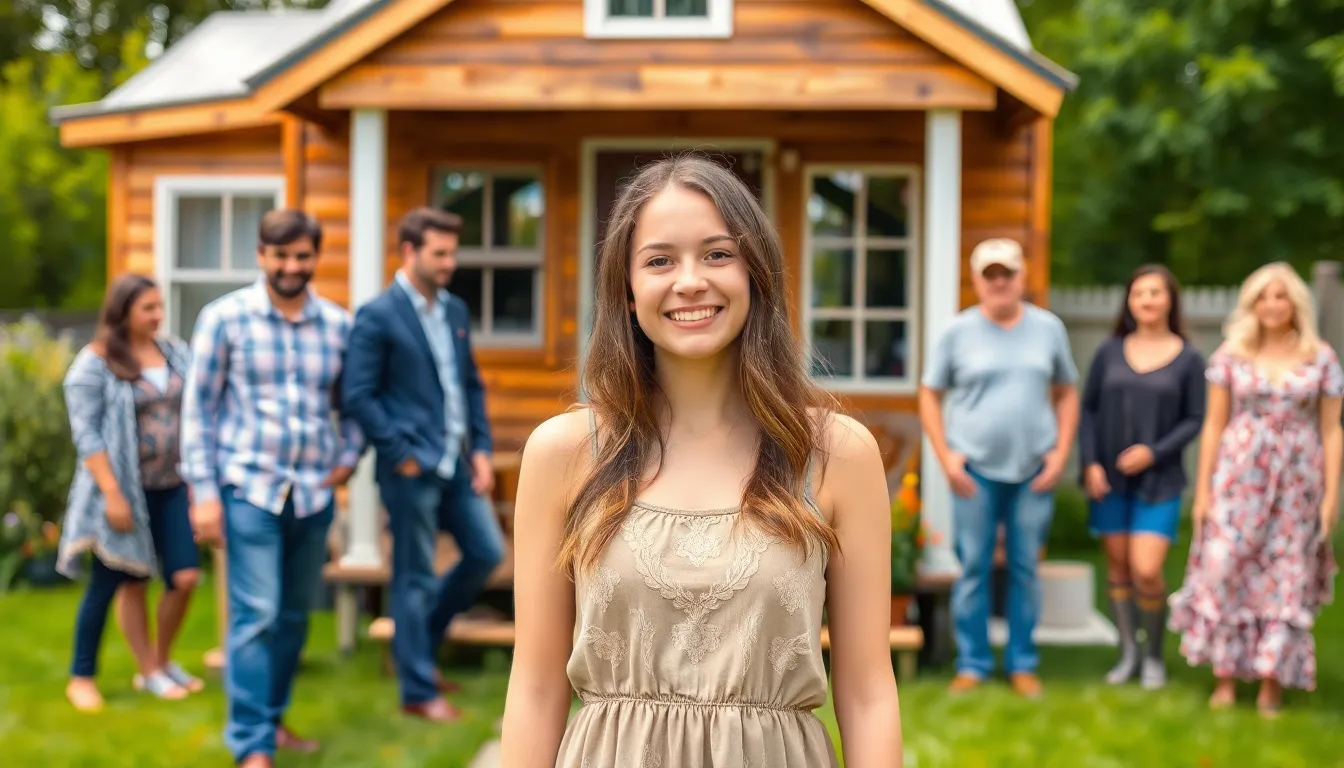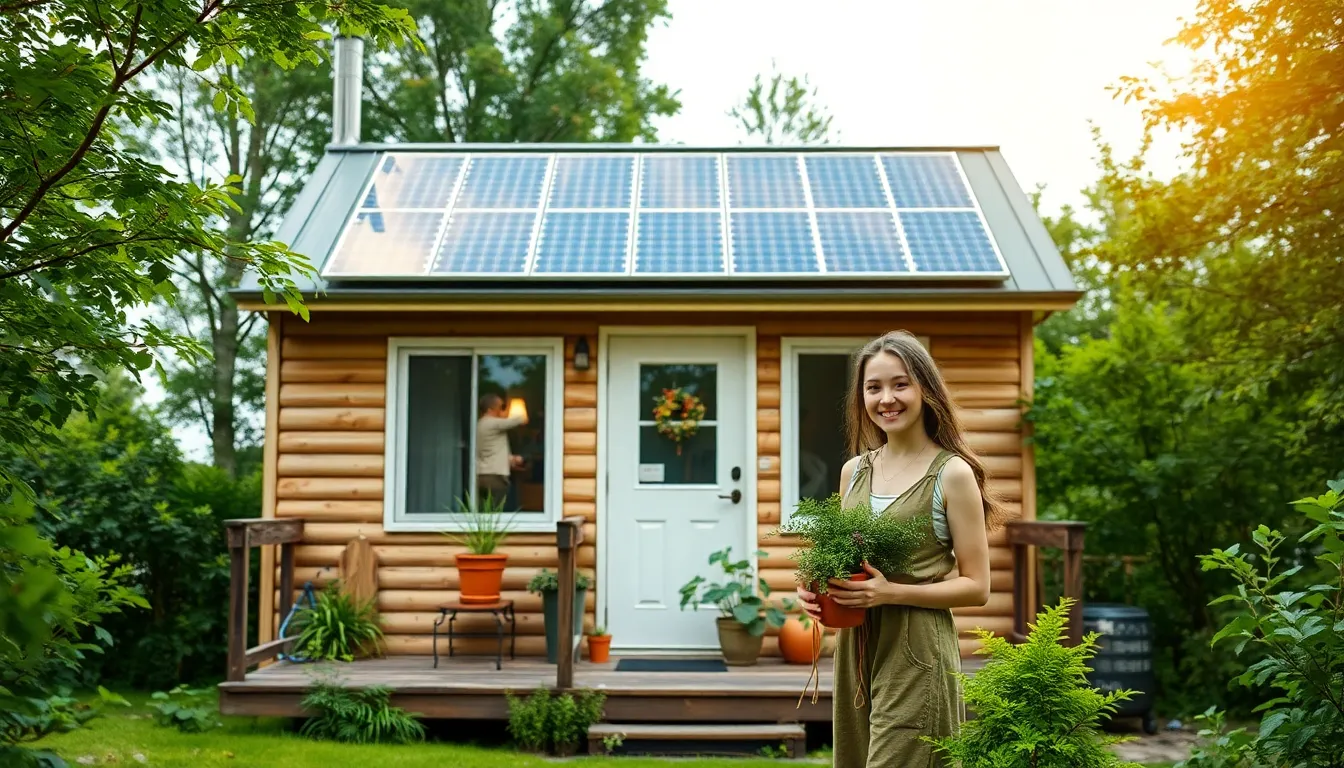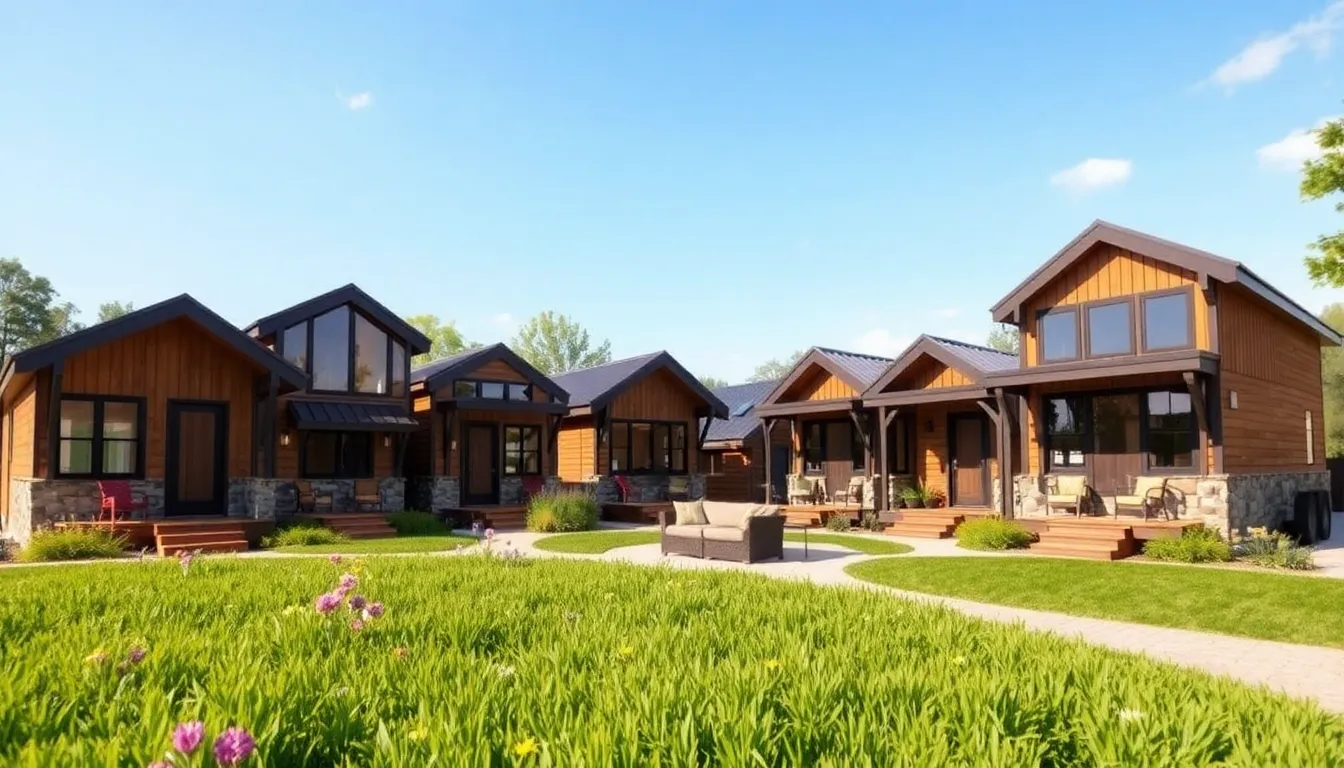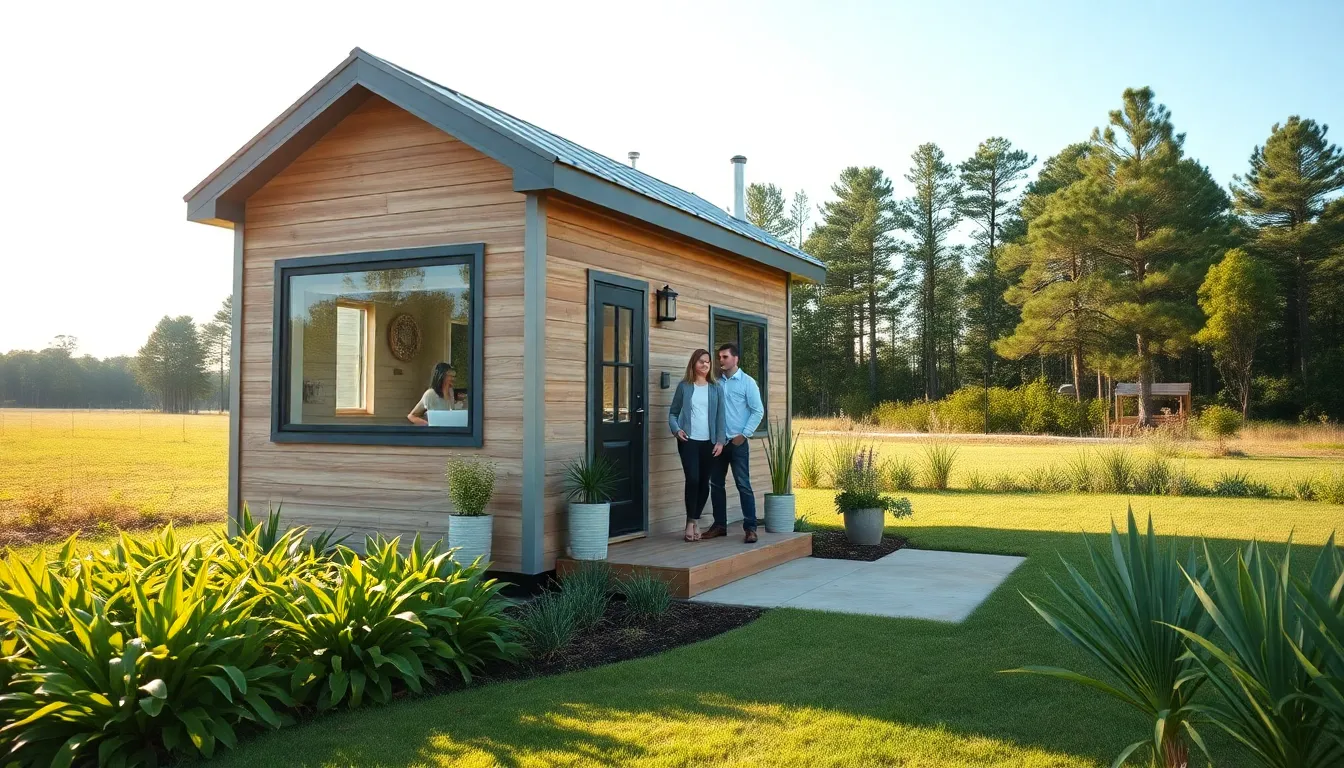Tiny homes are more than just a trend; they’re a lifestyle revolution. Imagine living in a space that’s as cozy as a hug from your favorite blanket, yet stylish enough to make your friends green with envy. These pint-sized palaces offer all the charm of a traditional home without the hefty price tag or the endless cleaning.
Table of Contents
ToggleThe Rise of Tiny Home Tours
Interest in tiny home tours has surged across the United States. Many people seek inspiration from unique living solutions that maximize space. Enthusiasts flock to events showcasing innovative designs and sustainable features. The increasing popularity of these tours reflects a shift towards minimalist living.
Real estate trends indicate that tiny homes appeal to both millennials and retirees. This demographic diversity contributes to a broader acceptance of non-traditional layouts. Individuals appreciate the blend of functionality and aesthetics in compact spaces.
Furthermore, tiny home tours often highlight eco-friendly options, resonating with environmentally-conscious buyers. Sustainable materials and energy-efficient features characterize many homes showcased during tours. Visitors embrace the opportunity to learn about green building practices firsthand.
Engagement with tiny home tours has also fostered communities centered around shared values. Social media platforms facilitate connections among enthusiasts, sharing tips and experiences. Online platforms like Instagram and YouTube amplify the reach of tiny home tours through visually compelling content.
Admiration for creative design answers the growing discontent with conventional housing costs. Potential homeowners explore practical solutions that offer financial freedom. By experiencing tiny homes in person, they gain insights into living comfortably with less.
As the movement progresses, tiny home tours serve as an educational resource. They present opportunities for people to envision new living possibilities. The rise of tiny home tours signals a lasting change in the housing landscape.
Benefits of Tiny Home Living
Tiny home living offers numerous advantages that appeal to many individuals seeking a simplified lifestyle. Affordability and sustainability lead the list of these benefits.
Affordability
Tiny homes provide lower prices compared to traditional houses. With an average cost under $60,000, many homebuyers find entry into the real estate market attainable. Reduced utility expenses further amplify savings. Smaller spaces require less energy for heating and cooling, benefiting both budgets and the environment. Taxes on these homes often decrease due to their lower market value. Financing options are also more accessible, making it easier for individuals to secure loans. Additionally, less financial burden allows for greater investment in experiences rather than possessions.
Sustainability
Tiny homes promote eco-friendly living through smaller footprints. These homes use fewer resources, aiding in the conservation of natural materials. Incorporating sustainable products like reclaimed wood and energy-efficient appliances minimizes impact on the planet. Many designs include features such as solar panels and rainwater collection systems, which enhance self-sufficiency. Community-focused initiatives often encourage residents to embrace local resources and reduce waste. By prioritizing a minimalist lifestyle, tiny homes inspire occupants to create meaningful connections with their environment.
Popular Tiny Home Tours to Explore
Tiny home tours offer diverse experiences, showcasing innovative living solutions that many find inspiring.
Notable Locations
Numerous cities across the United States feature standout tiny home tours. For instance, Portland, Oregon, hosts the Tiny House Hotel, bringing together various models with distinct styles. In Austin, Texas, the annual Tiny Home Jamboree attracts thousands, presenting a range of homes emphasizing eco-friendliness. On the West Coast, California’s Tiny House Expo highlights builders and designers committed to sustainable living. Additionally, Asheville, North Carolina, boasts a vibrant tiny home community, allowing visitors to explore charming homes nestled in the mountains. Each location emphasizes unique lifestyle choices aligned with community values.
Unique Designs
Many tiny home tours highlight innovative designs that challenge conventional living norms. For instance, some homes incorporate multi-functional furniture, maximizing usability in limited spaces. Others feature lofted sleeping areas, promoting smart vertical design strategies. Tiny homes often showcase eco-friendly materials, such as reclaimed wood and metal, enhancing aesthetic appeal while ensuring sustainability. Unique architectural elements like curved walls or large windows invite natural light, creating a sense of openness. Customization options further allow homeowners to express their individuality, ensuring that each tiny home tells a distinct story. Visitors on these tours gain insights into practical design solutions that inspire their own living spaces.
What to Expect on a Tiny Home Tour
Tiny home tours provide immersive experiences designed to inspire creativity and showcase innovative living solutions. Visitors engage with unique designs and practical layouts that maximize available space.
Guided Experiences
Guided tours offer in-depth insights into the tiny home lifestyle. Knowledgeable hosts share stories about construction techniques, materials used, and design philosophies. Each tour typically includes walkthroughs of different homes, allowing guests to visualize creative space utilization. Some hosts focus on eco-friendly practices, highlighting sustainable building materials and energy-efficient systems. Prioritizing interaction, many tours encourage questions, enabling visitors to grasp how these homes meet diverse needs. Organizations often arrange group visits, facilitating connections among like-minded individuals passionate about tiny living.
DIY Tips
DIY enthusiasts can find invaluable tips during tiny home tours. Practical advice ranges from maximizing storage to selecting multifunctional furniture. Many hosts demonstrate clever design hacks that make tiny spaces more functional. Attendees learn about the benefits of custom-built solutions, such as fold-out tables and integrated shelving. Space-saving techniques resonate well with those seeking to personalize their tiny living experience. Guides also discuss budgeting strategies for those interested in constructing their own tiny homes. Engaging discussions during tours empower individuals to embark on their tiny home journey with confidence.
Conclusion
Tiny home tours are more than just a showcase of innovative living spaces. They represent a shift towards a lifestyle that values simplicity, sustainability, and community. As individuals explore these unique homes, they discover practical solutions that inspire creativity and foster connections with like-minded enthusiasts.
The popularity of these tours reflects a growing desire for affordable and eco-friendly housing options. By engaging with the tiny home movement, people can envision new possibilities for their living arrangements. This trend not only challenges conventional housing norms but also encourages a more mindful approach to homeownership.
Ultimately, tiny home tours serve as a gateway to a fulfilling lifestyle that prioritizes personal values and environmental responsibility. As this movement continues to grow, it promises to reshape the future of housing for generations to come.








